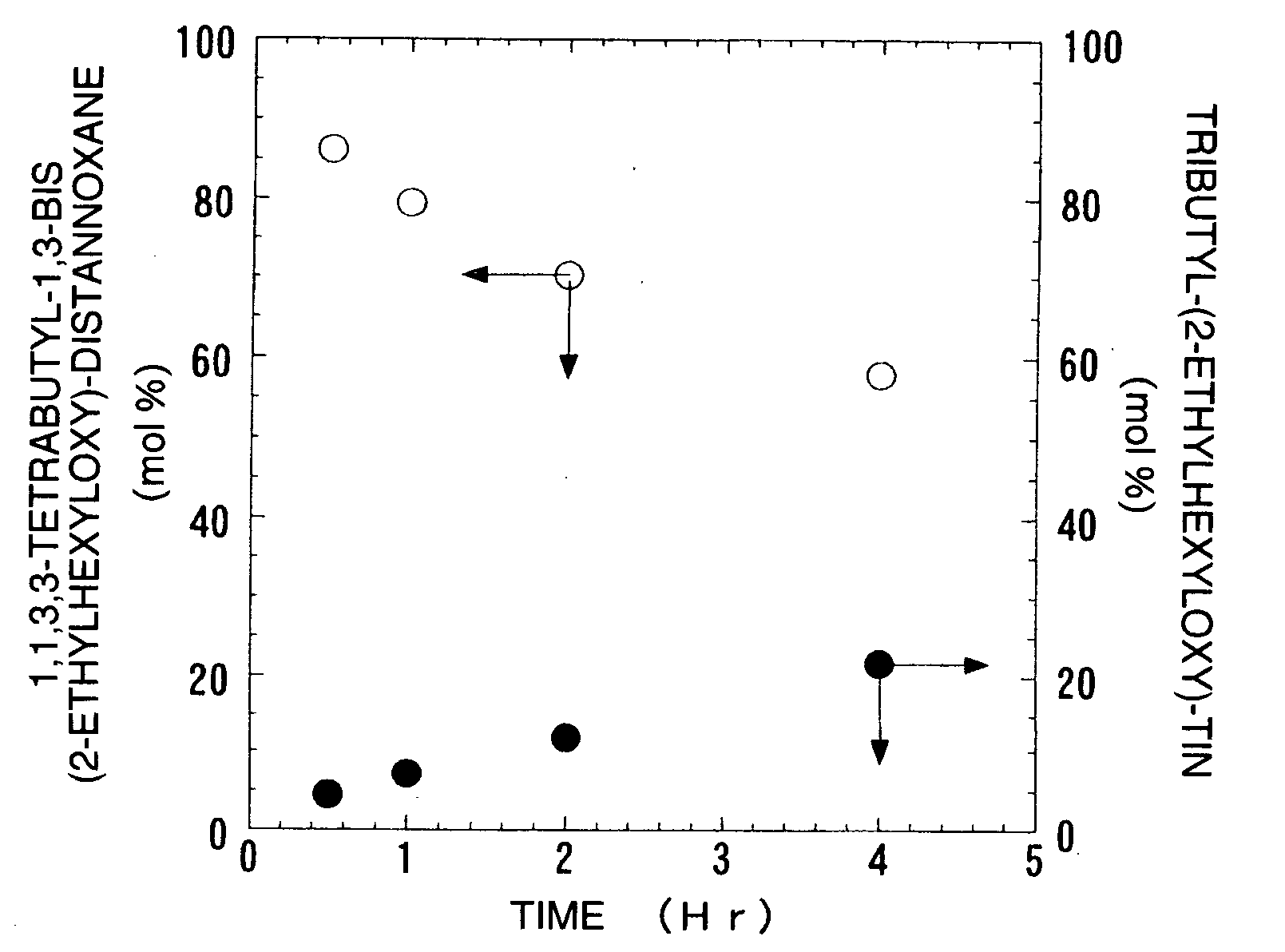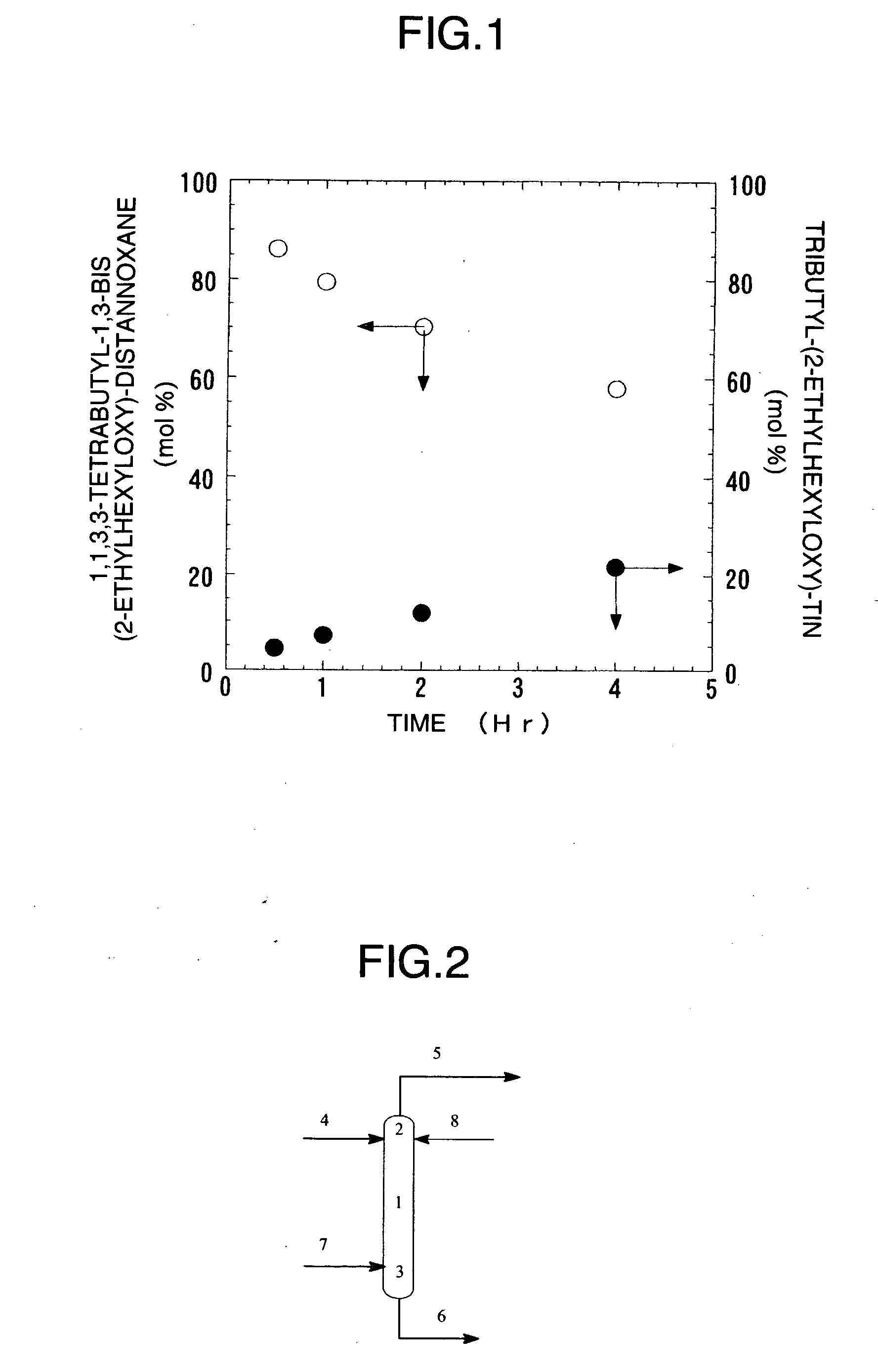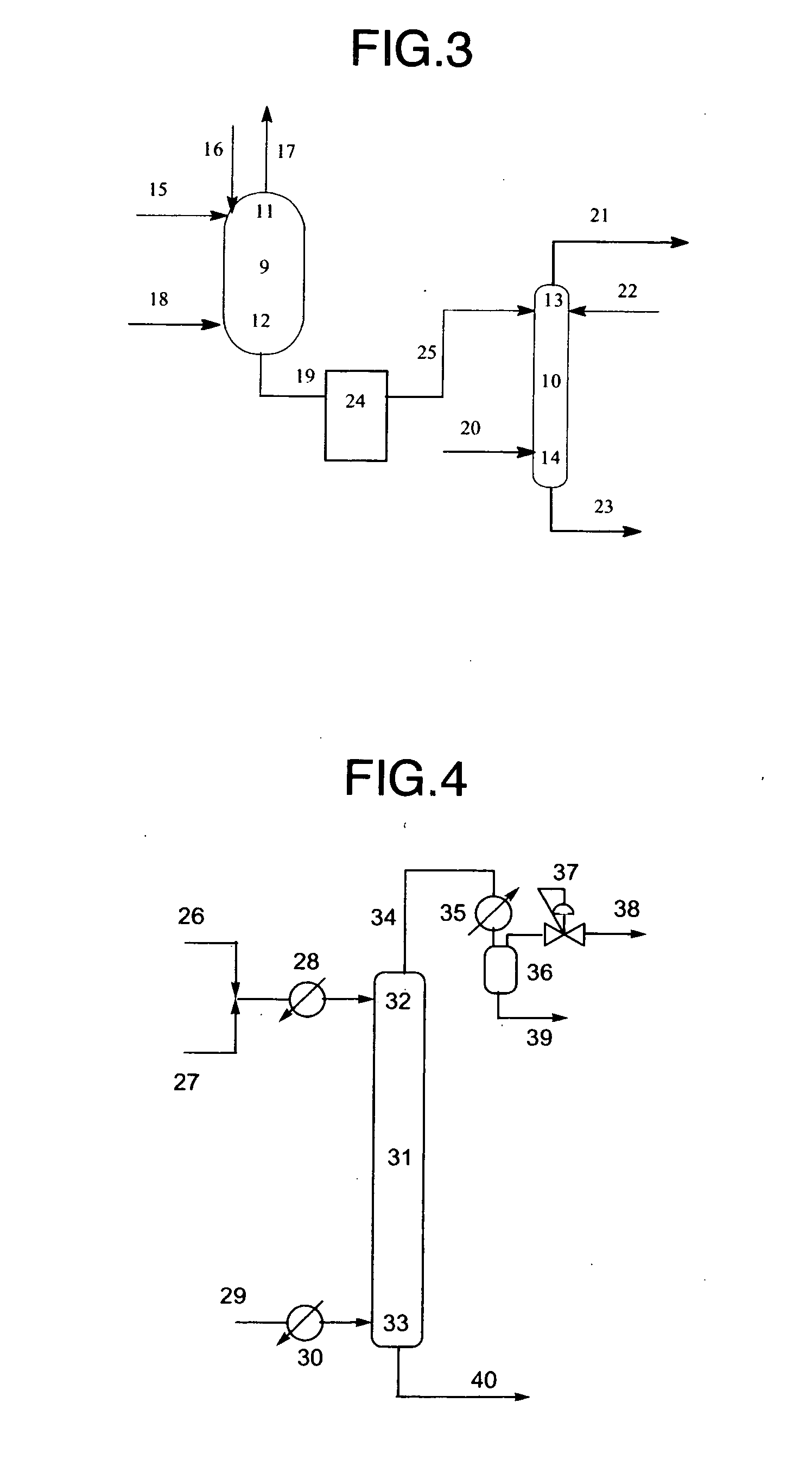Process for Production of Alkyltin Alkoxides
a technology of alkyltin alkoxide and alkyltin alkoxide, which is applied in the preparation of carbon dioxide or inorganic carbonates, physical/chemical process catalysts, organic compounds/hydrides/coordination complex catalysts, etc., can solve the problems of high production cost and waste production, use of the former process as an industrial production process, and consuming a significant amount of energy. , to achieve the effect of high productivity
- Summary
- Abstract
- Description
- Claims
- Application Information
AI Technical Summary
Benefits of technology
Problems solved by technology
Method used
Image
Examples
example 1
Preparation of a mixed solution of the starting material 1,1,3,3-tetrabutyl-1,3-bis(2-ethyl-butyloxy)distannoxane and the reactant 2-ethyl-1-butanol
[0122]A 1-liter recovery flask was charged with 24.9 g (0.1 mol) of dibutyltin oxide (manufactured by Aldrich Chemical Co., U.S.A., 98%) and 208 g (2.0 mol) of 2-ethyl-1-butanol (manufactured by Aldrich Chemical Co., U.S.A., 98%), whereby the flask contained the resulting white slurry mixture. The flask was attached to an evaporator (manufactured by Shibata Scientific Technology Ltd., R-144) connected to a thermoregulatory-equipped oil bath (manufactured by Masuda Corporation, Japan, OBH-24), a vacuum pump (manufactured by ULVAC Inc., Japan, G-50A), and a vacuum controller (manufactured by Okano Works Ltd., Japan, VC-10S). The oil bath temperature was set at 140° C. The flask was immersed in the oil bath, whereupon rotation of the evaporator was started. Rotation was continued for about 30 minutes while stirring and heating under atmosph...
example 2
Preparation of the starting material 1,1,3,3-tetrabutyl-1,3-bis(2-ethyl-butyloxy)-distannoxane)
[0125]A 500 ml recovery flask was charged with 59.8 g (0.15 mol) of dibutyltin oxide (manufactured by Aldrich Chemical Co., U.S.A., 98%) and 122 g (1.2 mol) of 2-ethyl-1-butanol (manufactured by Aldrich Chemical Co., U.S.A., 98%), whereby the flask contained the resulting white slurry mixture. The flask was attached to an evaporator (manufactured by Shibata Scientific Technology Ltd., Japan, R-144) connected to a thermoregulator-equipped oil bath (manufactured by Masuda Corporation, Japan, OBH-24), a vacuum pump (manufactured by ULVAC Inc., Japan, G-50A), and a vacuum controller (manufactured by Okano Works Ltd., Japan, VC-10S). The oil bath temperature was set at 140° C. The flask was immersed in the oil bath, whereupon rotation of the evaporator was started. Rotation was continued for about 30 minutes while stirring and heating under atmospheric pressure with the evaporator purge valve o...
example 3
Synthesis of 1,1,3,3-tetrabutyl-1,3-bis(2-ethylhexyloxy)-distannoxane)
[0128]A 2-liter three-necked flask equipped with a moisture quantitative receiver that was connected to a thermometer, a three-way stopcock and a Dimroth condenser was charged with 199.8 g (0.80 mol) of dibutyltin oxide (manufactured by Aldrich Chemical Co., U.S.A., 98%), 1,045 g (8.0 mol) of 2-ethyl-1-hexanol (manufactured by Aldrich Chemical Co., U.S.A., 99.6% dehydrated) and 500 g of toluene (manufactured by Wako Pure Chemical Industries Ltd., Japan, for organic synthesis) whereby the flask contained the resulting white slurry mixture. The flask was immersed in an oil bath (manufactured by Fine, Japan, FWB-240) set to 130° C. After 30 minutes of heating under stirring, the temperature of the mixture was 119° C., and recovery of the water and the toluene in the moisture quantitative receiver began.
[0129]This state was maintained for about 3 hours, after which about 7.2 mL of water was recovered in the moisture q...
PUM
| Property | Measurement | Unit |
|---|---|---|
| Temperature | aaaaa | aaaaa |
| Temperature | aaaaa | aaaaa |
| Fraction | aaaaa | aaaaa |
Abstract
Description
Claims
Application Information
 Login to View More
Login to View More - R&D
- Intellectual Property
- Life Sciences
- Materials
- Tech Scout
- Unparalleled Data Quality
- Higher Quality Content
- 60% Fewer Hallucinations
Browse by: Latest US Patents, China's latest patents, Technical Efficacy Thesaurus, Application Domain, Technology Topic, Popular Technical Reports.
© 2025 PatSnap. All rights reserved.Legal|Privacy policy|Modern Slavery Act Transparency Statement|Sitemap|About US| Contact US: help@patsnap.com



